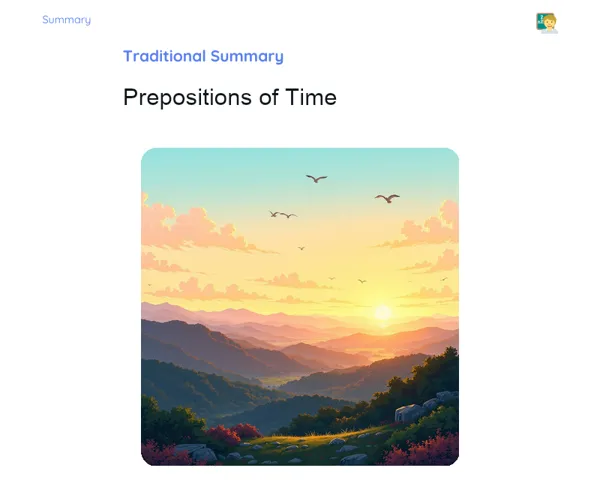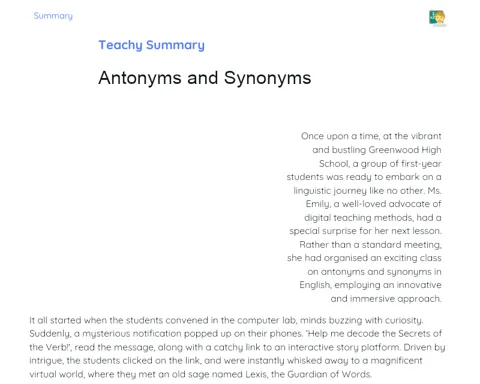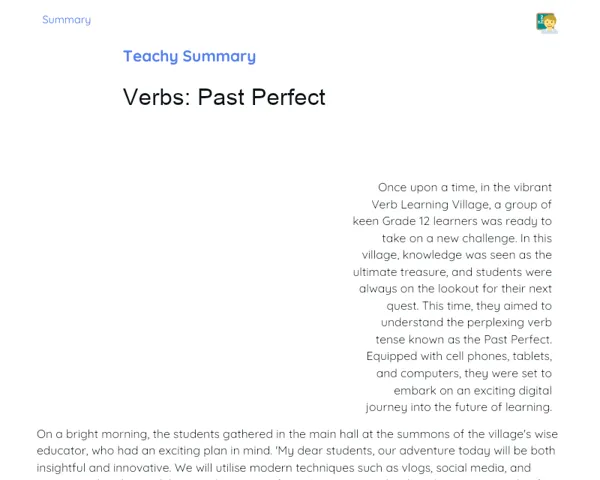Objectives
1. 🌍 Get the hang of using Present Perfect and Simple Past tenses in English, recognising when each is most suitable.
2. 🗣️ Sharpen your skills in applying these verb tenses in both writing and speaking contexts to enhance precision and clarity in English communication.
Contextualization
Have you ever noticed how slight changes in verb tenses can completely change the meaning of a story? 🤔 In English, the Present Perfect and Simple Past are key for expressing actions that took place at different times, and grasping these nuances is vital for effective communication. For example, the phrase 'I have lived in Brazil' suggests that the action of living in Brazil began in the past and is still happening today, while 'I lived in Brazil' signifies that the action occurred at a particular time in the past. These distinctions can seem subtle, but they greatly influence how narratives are conveyed and interpreted in English. 🌍📚
Important Topics
Present Perfect Tense
The Present Perfect is a verb tense that indicates an action that took place at some unspecified time in the past or that started in the past and continues to the present. It is formed by the present tense of the verb 'to have' (has/have) followed by the past participle of the main verb. This verb tense is essential for discussing life experiences, recent actions, or situations that hold relevance right now.
-
Structure: Have/has + past participle of the main verb.
-
Use: To describe actions that began in the past and continue or are relevant today, as well as life experiences and recent acts.
-
Example: 'I have studied English for three years.' - This indicates an action that started in the past and is ongoing.
Simple Past Tense
The Simple Past is utilised to refer to actions completed at a specific moment in the past. Generally, for regular verbs, this tense is formed by adding -ed, whereas irregular verbs adopt their own unique forms. This tense is crucial for storytelling, recounting past events, and discussing actions that do not relate to the present.
-
Structure: Regular verbs: Verb + ed. Irregular verbs: their specific past form.
-
Use: To discuss past actions that took place at a specific time, narrate stories, and describe completed events.
-
Example: 'She watched a movie last night.' - This describes an action that occurred at a distinct past time, that is, last night.
Distinguishing Between Present Perfect and Simple Past
Understanding the difference between Present Perfect and Simple Past is vital for precise communication. While the Present Perfect highlights the connection of a past action to the present, the Simple Past pertains to actions finished at a specific point in the past. Knowing when to choose between these verb tenses enhances clarity and effectiveness in English communication.
-
Present Perfect: Indicates an action that began in the past and continues or is relevant to now.
-
Simple Past: Used for actions that were completed at a definite time in the past.
-
Differentiation Example: 'I have eaten already.' (Present Perfect) - Suggests that the action of eating relates to the present moment. 'I ate an hour ago.' (Simple Past) - Refers to an action that happened at a specific time, an hour ago.
Key Terms
-
Present Perfect: A verb tense that indicates actions starting in the past and relevant to the present.
-
Simple Past: A verb tense that describes actions that were completed at a specified time in the past.
-
Past Participle: The form of the verb used with 'have' or 'has' in the Present Perfect, usually made by adding -ed to regular verbs.
For Reflection
-
How can opting for Present Perfect instead of Simple Past alter the way a story is interpreted?
-
Reflect on real-life instances where you might use the Present Perfect to describe actions that began in the past and continue now.
-
Why is it essential for an English speaker to distinctly differentiate between Present Perfect and Simple Past?
Important Conclusions
-
Today, we delved into the Present Perfect and Simple Past tenses in English, identifying their structures, uses, and significance in effective communication.
-
We recognised that the Present Perfect is vital for discussing life experiences, recent actions, and situations relevant to now, while the Simple Past serves to describe actions that took place at a defined time in the past.
-
The ability to distinguish and accurately use these tenses is crucial for ensuring clarity and precision in communication, whether in academic, professional, or everyday conversations.
To Exercise Knowledge
- Verb Tense Journal: Keep a journal for a week. Each day, jot down short paragraphs about your day, alternating between Present Perfect and Simple Past depending on the context. This will help reinforce the correct use of these verb tenses. 2. Interview with a Friend: Choose a friend or family member and conduct an 'interview' about their recent life experiences. Use the Present Perfect for relevant experiences and the Simple Past for specific past events. 3. Movie Review: Watch an English movie and note the verb tenses used by the characters. Try to spot examples of Present Perfect and Simple Past and think about why those tenses were chosen for each situation.
Challenge
Write a short story about a trip. Use the Present Perfect to describe the preparations and arrival at your destination, and the Simple Past for the events that occurred during the trip. Share your story with the class or in an online space for feedback and see how the verb tenses influence the narrative.
Study Tips
-
Practice speaking with a friend or in study groups, switching between using Present Perfect and Simple Past to describe experiences and events. This will help build fluency and confidence in these verb tenses.
-
Utilise language learning apps that offer grammar exercises and verb tense drills. Many of these apps provide immediate feedback, which is invaluable for enhancing your skills.
-
Consume English media – books, articles, films, and music, paying attention to the use of verb tenses. This not only aids comprehension, but also acts as a model to elevate your own writing and speaking.



